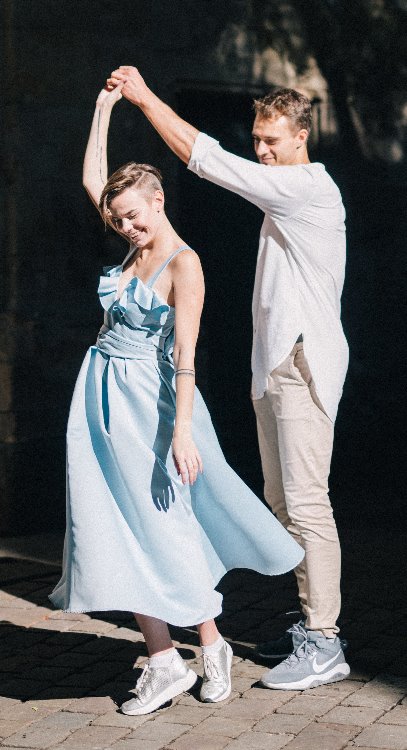
West Coast Swing is a smooth and playful dance, with no bounce like its swing relatives. It is also typically danced to slower music (around 90 to 130 beats per minute) than East Coast Swing, but advanced West Coast Swing dancers will often dance to faster tempos.
West Coast Swing is danced in a slot with the lady going up and down the slot as the man goes from one side to the other leading her in turns, spins, walks, whips, tucks and passes. This slotted movement allows for the characteristic expansion and contractions in the movements of West Coast Swing which creates a sense of stretching away from each other and then coming back together.
West Coast Swing is a dance that allows a maximum of freedom of expression and improvisation between the partners, typically seen at the higher levels. Because of these characteristics, West Coast Swing is not one of the easiest dances for a beginner dancer to learn.
West Coast Swing can be danced to a wide variety of music genres such as pop, rock, country western, jazz, funk, R&B, and has a wide range of tempos from 100 to 130 beat per minute. The music for west coast swing is written in 4/4 time and for the basic step, is composed of 2 walking steps and 2 triple steps.
Popular West Coast Swing Music
- Alannah Myles- Black Velvet
- U2- Angel of Harlem
- Michael Bublé- Baby (You’ve Got What It Takes)
- Marvin Gaye- Heard it Through the Grapevine
- En Vogue – Beat Of Love
West Coast Swing History
West Coast Swing is one of the many dances that evolved from swing. It was created in the 1950s in Los Angeles as a smoother Lindy Hop style of swing, danced to slower music. West Coast Swing continued to evolve, grow in popularity and spread around the country and eventually around the world. Even today, west coast swing is an evolving and changing dance to accommodate contemporary music and individual and regional styles.
Contact The Dancing Duo today about West Coast Swing Lessons! Also check our calendar to see if this is currently being taught!

